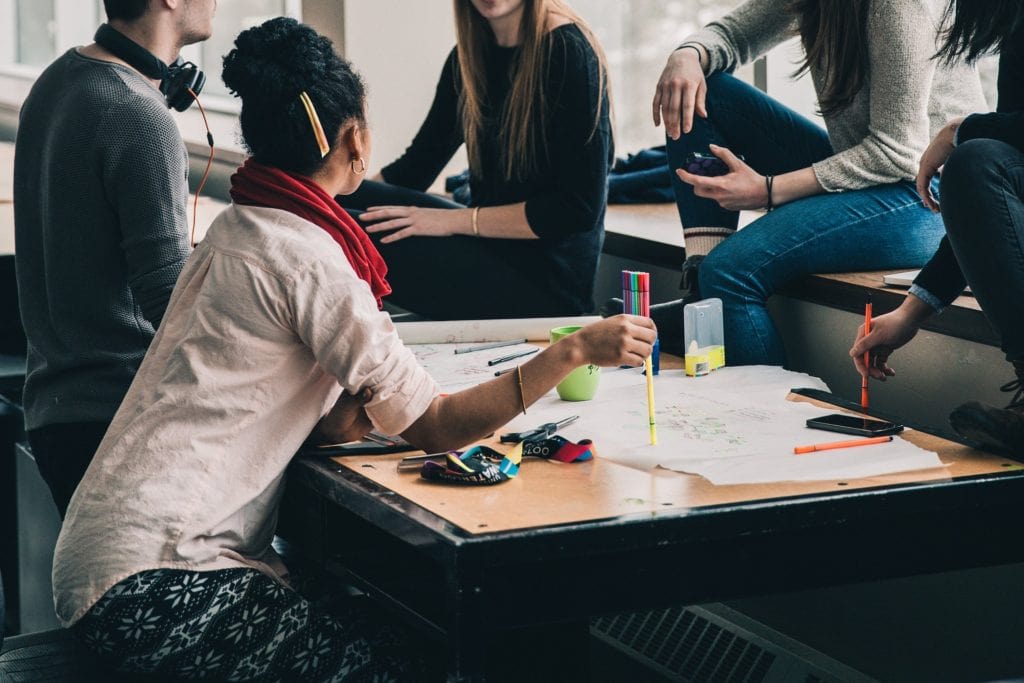Every new school year, teachers return to their classrooms and are faced with the same dilemma:
How should the student desks be configured?
Most of us have done it all: the double horseshoe, pairs, small groups, circles and of course the student-dreaded single rows synonymous with testing.
Tired of the same old set-up? Well, we have the solution! This year, why not implement a fun new student desk arrangement inspired by travel?
As an educational travel company, we love all things related to travel and education, which is why our favorite classroom configuration involves creating small groups which each represent a different destination! Using travel destinations pertinent to the content you teach is a fun and creative way to organize student desks.
Not convinced? Continue reading to learn how and why this desk arrangement can be used to revamp your classroom this year!
How to Use Travel Destinations to Create Student Groups
First things first: decide how many groups you will be creating/how many students per group (in my classroom for example, the configuration that worked best was 6 groups of 5 for an average class size of 30 students). Once you’ve determined your number of groups, you then need to think of a corresponding number of travel destinations. Ideally, these destinations should relate to whatever your students are learning about. For example, during a unit on Francophone islands, each group can be assigned a different island. Similarly, during a unit on Paris, student groups can be assigned different famous Parisian monuments/landmarks. After developing your list of places, you then need to come up with a way to assign students to their groups. If you want to assign students to groups at random, options could include writing the destination names on notecards, popsicle sticks or paper cut-outs designed to look like plane/train tickets which the students will draw out of a bucket at the beginning of the class. By randomizing the seating chart in this way, students are given the opportunity to work with a different set of their peers and build new classroom relationships.How Travel Groupings Promote Collaborative Learning
Once students have arrived at their “destination” (group of desks), the teacher should take advantage of this moment to promote collaborative learning and community building. Before launching into the lesson, students in each group should be given the opportunity to get to know one another and work together as a team. Our favorite collaborative activity? Making a group flag! Because students have been assigned a destination, designing a flag is a fun and theme-appropriate task. Provide each group with paper and basic art supplies and instruct them to work together to develop a flag which represents not only their assigned destination, but also all of the team members (ex. requirement could be that all of their names are incorporated into the design). Upon completion, students can share their flag with the rest of class and in some cases, you may even want to turn the activity into a competition in which students vote for their favorite design. Depending on your classroom set-up, the finished flags could then be hung on the walls, classroom doorway or affixed to the edge of the groups’ desks.- Additional activity: If you think you might use destination-themed groupings all year, why not develop some type of “student passport” at the beginning of the year? Students can have fun on the first day of class creating the identity page of their passport (affixing a photo, writing in their biographical information in the target language, designing the cover etc.) and then receive a “stamp” (sticker, stamp etc.) on their passport every time they are assigned a different destination (desk group). If nothing else, this will introduce students to the concept of international travel and passports and is a fun souvenir at the end of the school year!
Why We Love the Destination Desk Configuration
In summary, here are just a few of the reasons why we love creating student groups using travel destinations:- Using destinations as the theme for your small groups makes students curious about different places and can lead to rich discussions about travel & culture
- Destination groupings can be customized to reflect places your class is learning about & be tied into your unit/curriculum
- Destination groupings work well to promote collaborative learning and community building
- It’s a fun, easy and fresh way to set-up your classroom!
How do you set-up your classroom? We’d love to hear from you!

